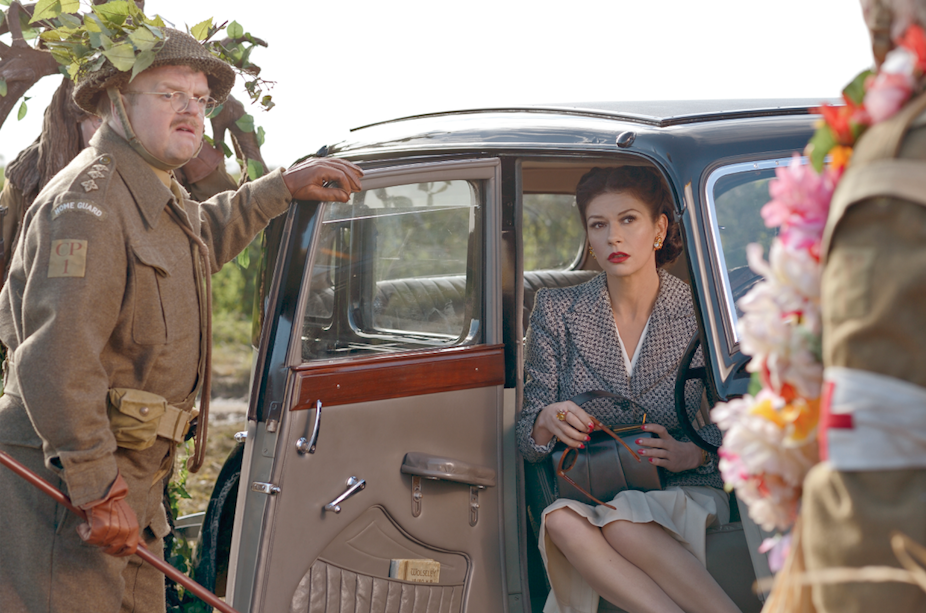The new Dad’s Army film is a celebration of two historic British institutions: the relatively short-lived military force, the Home Guard, that played a key role in Britain’s defence during World War II, and the much-loved TV sitcom that ran from 1968-1977, which has enjoyed such regular repeats that it hasn’t much left the screen. While the show followed the domestic escapades of Captain Mainwaring and his ageing band of brothers, women didn’t much feature. With the new cinematic offering, there are now some women in the frame.
The reviews aren’t great, but I am looking forward to seeing a better balance of genders in the film. Mainwaring’s wife, Elizabeth, was often heard of but never seen in the TV series. In the film, she steps onscreen, leading local women from the Auxiliary Territorial Service (ATS) to help protect Walmington-on-Sea alongside the men of the Home Guard.
But women were not just consigned to services such as the ATS. In fact, many played a role in the Home Guard, despite the fact that they weren’t strictly supposed to. Yes, there was a mum’s army too.
Anthony Eden’s radio broadcast of May 14 1940 appealed for “men … who are for one reason or another not at present engaged in military service … to come forward now and offer their services” as Local Defence Volunteers (LDV), which was later renamed the Home Guard. The response was instantaneous, with some men heading for their local police stations to register before Eden had even finished speaking. This was not only true of men. Some police officers were confronted by women demanding to be enrolled too. One was Edna Selwyn, a company secretary from Birmingham. She later remembered:
I went straight round there as soon as Anthony Eden finished. [The police sergeant] was quite horrified and said ‘I had no idea there’d be any women’.
The sergeant gave Selwyn the job of helping him to enrol volunteers, and, in this way, she became one of the first “unofficial” women to support the new force.
It hadn’t been the government’s intention that women should join the LDV. But local commanders certainly accepted women volunteers. Typically, these “unofficial” women acted in auxiliary capacities, as secretaries, drivers, and in catering roles. But some women did receive weapons training from Home Guard units.

All this unofficial involvement by women led to a government announcement, in June 1940, that women could not be enrolled in the force. A few weeks later, at a War Cabinet meeting, the Commander-in-Chief of the Home Forces, General Sir Edmund Ironside, argued that women should be enrolled, and armed. But the government rejected the idea, and in November 1941 banned women from any military involvement with the Home Guard.
But women continued to be attached to the force in order to provide support services through membership in the Women’s Voluntary Services. Also, local units continued to recruit women in other capacities, for example, as drivers. By late 1942, as many as 50,000 women were serving, entirely unofficially, with the Home Guard.

Many fought against this unofficial arrangement. Chief among them was Edith Summerskill, the leading parliamentary advocate of women in the Home Guard. In particular, she sought a combatant role for women in the force. But she was only partially successful. In April 1943 it was formally announced that women could be officially enrolled in the Home Guard. But they would be issued only with a small, plastic brooch badge, and would not be permitted to carry weapons, let alone train with them, despite the fact that from the start of the war women had trained with weapons. The largest such organisation was the privately organised Women’s Home Defence corps. The women of the WHD, which claimed 30,000 members in April 1943, undertook rifle training, and often practised on shooting ranges with local Home Guard units.

Women of the Home Guard were, at first, given the rather unflattering title of “nominated women”, but this was later changed to Women’s Home Guard Auxiliaries along with a better badge. The government set a ceiling of 80,000 women in the Home Guard in early 1943. But only 30,000 women had enrolled a year later, many of whom had already been unofficial members.
Despite the initial ban on women in the Home Guard, some women were incorporated into units on equal terms. Ironically, the clearest evidence of this relates to government ministries’ own Home Guard units. An example was Mary Warschauer, a 20-year-old code and cipher clerk at the Air Ministry in London in 1940. She was also part of the Air Ministry’s Home Guard unit. Its role was to provide a defence for the ministry’s offices. Warschauer was part of a uniformed, armed, and active Home Guard unit, involved in all the activities that government forbade women to be involved in.

Another unit which formally recruited women from the outset was the Upper Thames Patrol. Established in June 1940, it provided water and shore patrols along the River Thames. Unable to recruit enough male drivers, the commanding officer recruited women instead. One famous photograph shows a young female member piloting a motor boat on the Thames.
Women formed a small part of the Home Guard, which had 1.5m members at peak strength. But they were a notable part. And many women strove to give expression to their patriotism in the real Dad’s Army.

